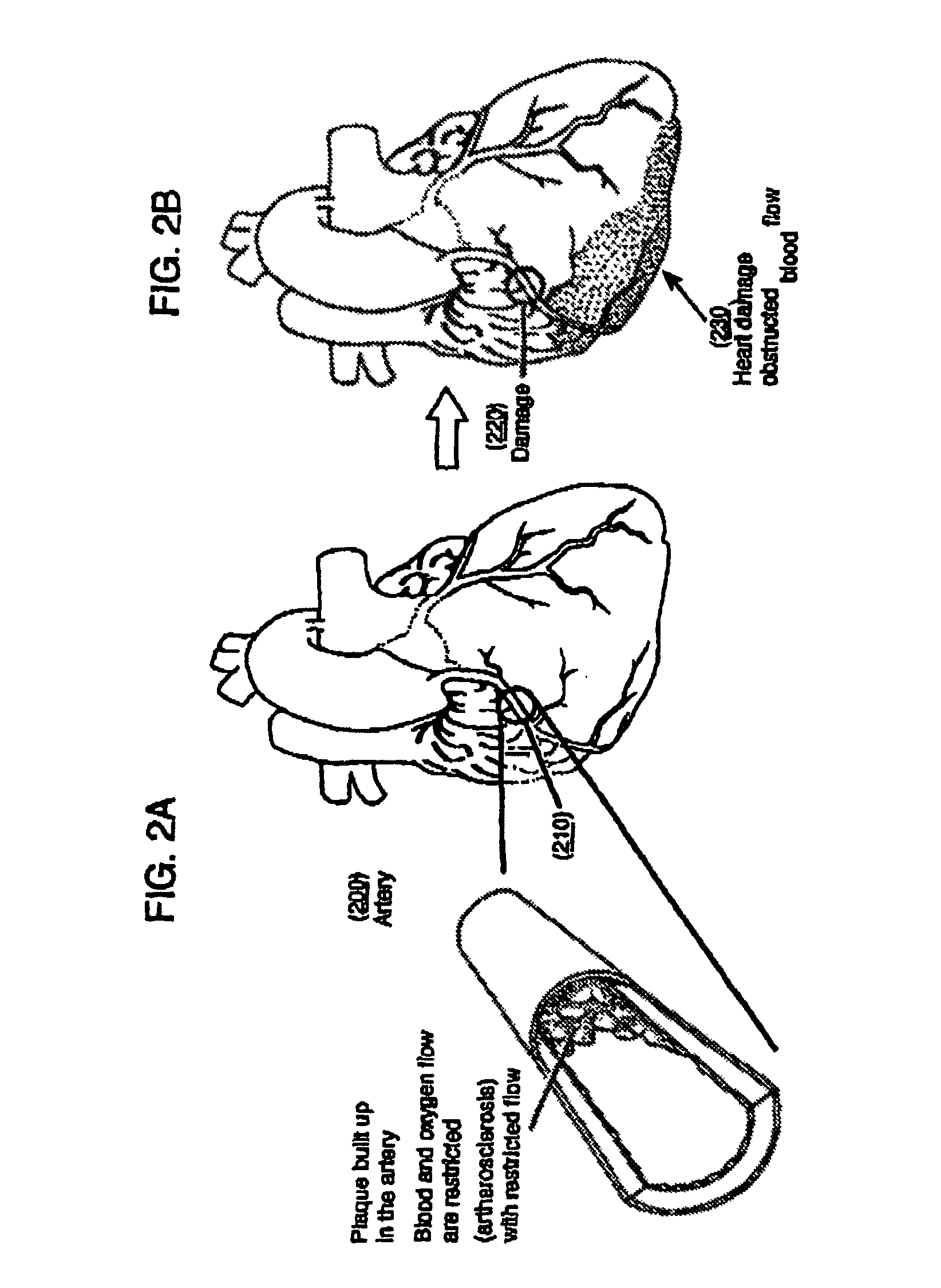High-viscosity hyaluronic acid compositions to treat myocardial conditions
a technology of hyaluronic acid and composition, which is applied in the field of cardiomyoplasty treatment, can solve the problems of sudden death in adults, blood clotting within the artery, and the imbalance between the blood flow of the myocardium and the metabolic demand of the myocardium, so as to improve the cellular cardiomyoplasty effect, minimize embolic risk, and maximize the effect of injection
- Summary
- Abstract
- Description
- Claims
- Application Information
AI Technical Summary
Benefits of technology
Problems solved by technology
Method used
Image
Examples
example 1
[0209]Example 1 illustrates one possible three-component system described in FIG. 7 to treat a myocardial infarction. A cross-linking functionality can be synthesized starting from a fluorinated molecule with an ethylene functionality as in FIG. 22. Bromine 2310 is added to a fluoronated molecule 2300. Reduced thiols rapidly replace the bromine groups forming a di-functional thiol component 2320. The di-functional thiol 2330 can then react with a tetra-acryloyl(polyethylene glycol) 2340 and a di-functional polyethylene glycol with both the thiol functionality and the RGD 2380 peptide sequence. The tetra-acryloyl(polyethylene glycol) can be obtained from Shearwater Polymers as a specialty polymer (product number 0J0000D04; Mr=2,000 with each arm having a molecular weight of 500 g / mol or ˜15 PEG sequences long). It is generated by the reaction of the tetra-hydroxyl terminated polyethylene glycol and acryloyl in the presence of a tertiary amine.
[0210]The third component is a peptide bi...
example 2
[0212]Example 2 incorporates all of the components of Example 1 with an additional component. Adult skin cells capable of differentiating into cardiomyocytes are added to the second component, a perfluoronated compound. The cells may be injected along with the perfluoronated thiol. This would result in the formation of a hydrogel capable of supporting the oxygen demands of the cell. In addition the gel would swell by taking up fluids, provide nutrients for the cells and is capable of eliminating cellular wastes as well as serving as a cellular scaffold for deposition of the fibroblasts. Other sources of cells that could be delivered and survive may include but are not limited to adult, fetal and embryonic stems cells (e.g., mesenchymal, skeletal myoblast cells).
example 3
[0213]Example 3 illustrates the use of gel introduction to the infarct region of a deceased rat heart. Ex vivo rat hearts were obtained and the hearts were mapped for the infarct region. Less than 30 microliters of material were injected into the infarct region. An agent, 10% poly (allyl amine) hydrochloride (3.1 grams) plus 35% poly(acrylic acid) (0.7 grams) system is protonated, resulting in a stable aqueous solution was maintained at pH 3.0 within the catheter until it reached the targeted area. The solution was injected into 10% gelatin gel in phosphate-buffered saline. The injectate gels instantly. The same injectate was used on the ex-vivo rat heart. The injectate gelled instantly at the infarct region.
PUM
| Property | Measurement | Unit |
|---|---|---|
| zero-shear viscosity | aaaaa | aaaaa |
| zero-shear viscosity | aaaaa | aaaaa |
| concentration | aaaaa | aaaaa |
Abstract
Description
Claims
Application Information
 Login to View More
Login to View More - R&D
- Intellectual Property
- Life Sciences
- Materials
- Tech Scout
- Unparalleled Data Quality
- Higher Quality Content
- 60% Fewer Hallucinations
Browse by: Latest US Patents, China's latest patents, Technical Efficacy Thesaurus, Application Domain, Technology Topic, Popular Technical Reports.
© 2025 PatSnap. All rights reserved.Legal|Privacy policy|Modern Slavery Act Transparency Statement|Sitemap|About US| Contact US: help@patsnap.com



